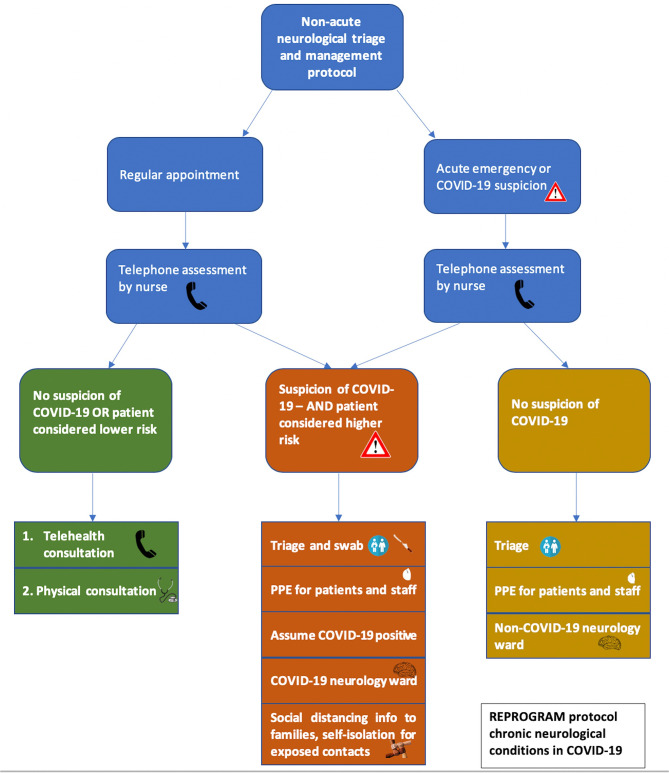Figure 1.
Proposed flow chart outlining the triage and management decisions for patients with chronic neurological conditions in the COVID-19. This flow chart applies to chronic patients who need to make a regular appointment, such as for scheduled check-ups or prescription refills, or for acute emergency presentations due to possible COVID-19 cases or acute neurological symptoms. In both situations, an initial telephone conversation should screen patients to assess the possibility of a COVID-19 infection. This will involve asking about fever, cough, sore throat, fatigue, shortness of breath, anosmia, and potential COVID-19 contact. For those patients without COVID-19 symptoms or who are at low risk and don't require presentation to hospital, telehealth consultation with their neurologist or primary physician can be undertaken. Where this is not possible, physical consultation may be required. If there is suspicion that the patient may have COVID-19 and they are considered at higher risk to their health, they should present to the hospital and receive point-of-entry triage and swabbing for COVID-19 infection. PPE should be worn by both staff and patients. Patients should be assumed to be COVID-19 positive until proven otherwise and be taken to a designated COVID-19 neurology ward. Close relatives and attendees of the patient should also practice social isolation whilst awaiting test results. For patients who require acute neurological care and are not suspected of having a COVID-19 infection, they should receive point-of-entry triage, PPE should be supplied to patients and staff and they should be admitted to a non-COVID-19 neurology ward if necessary. Triage assessment will involve stratification by mild, moderate, severe, and critical risk, according to Table 1.

